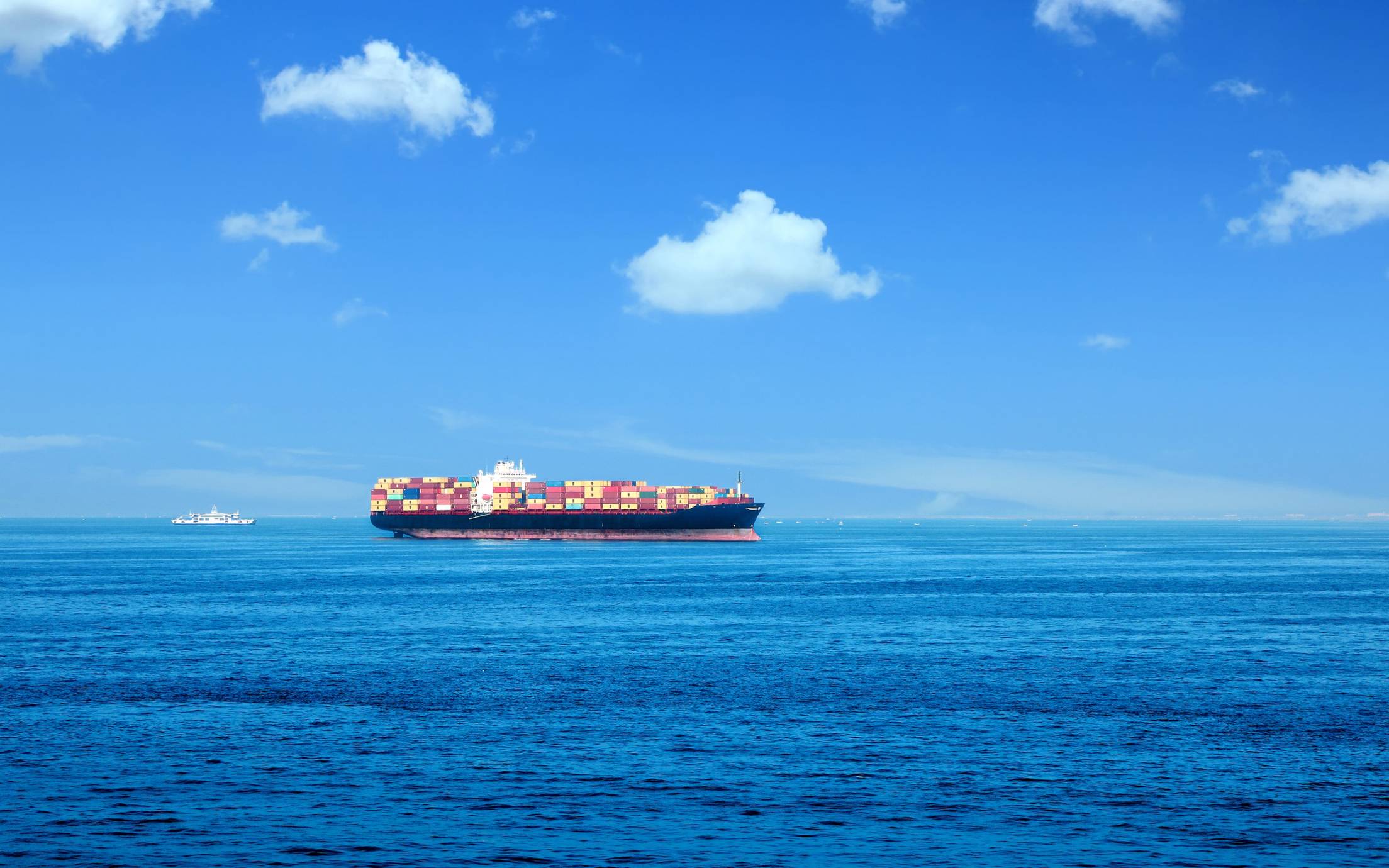Shipping is often criticised for reacting slowly. Then IMO launched the challenge to accelerate decarbonisation in shipping beyond the Energy Efficiency Design Index (EEDI) requirements. This time, the shipping industry actually picked up the gauntlet quite quickly.
Meeting the challenge will be no quick fix. The hunt is on for technologies and innovations to decarbonise shipping and meet stricter shipping environmental regulations. But shipowners are to a large extent in the hands of others.
Reducing vessel emissions
Shipowners can be pioneers in embracing new technologies and innovations. However, the business of running ships is very different from developing green technologies. For decades, the best effort made by shipowners includes adopting fuel saving machinery and equipment. The reason being that less fuel does not merely reduce vessel emissions, but also generates larger profits.
The shipping industry has proposed a technology fund to be financed by levies on fuel, under IMO management. The fund’s purpose would be to develop new technologies needed to meet decarbonisation targets. So far, the IMO has not committed to taking on that role.
The EEDI rules mean that ships must do the same amount of work while reducing vessel emissions by up to 50% for some new ships that will exceed the IMO’s 2018 ambitions. For others, the vessel emission reduction is just 30%. However, only new ships are included and CO₂ emissions from ships built prior to EEDI will not be reduced.
Decarbonisation in shipping: extended requirements
The IMO 2050 plans to adopt an Energy Efficiency Existing Ship Index (EEXI). The index extends the decarbonisation requirements to all existing ships above 400gt. The overarching principles of EEXI and a new operational carbon intensity indicator (CII) were adopted at MEPC 75 in 2020. A task force is currently working to specify the index before presenting it to MEPC 76 in June 2021.
If adopted, the concept is expected to be effective as of 2023. All ships will need to attain the required EEXI rating at the first annual IAPP survey after that. For some ships, the best way to meet EEXI requirements include a reduction in power through limited engine power. Others may achieve it through energy saving devices, e.g. hull appendage and propeller ducts.
On new vessels, it could be achieved by switching to lower carbon fuel. This especially applies if the ship was built LNG-ready or with an easily converted engine type. With others, the best way forward could include remodelling of the hull, addition of an air lubrication system, or replacing of propellers.
The scale of the task facing the shipping industry should not be underestimated. More than half of the world fleet (around 16,000 vessels) could be required to reduce power usage by 20–50%. Alternatively they would be required to make corresponding efficiency enhancing modifications.
Shipping and the environment
There is much work to be done in terms of developing the necessary formulae. This may enable correct perceived failings in the EEDI. These include accommodating dual-fuel engines able to run on several fuel types, or accounting for hybrid ships when the time running on battery cannot be guaranteed. It could also include vessels with waste heat recovery systems.
Some of these improvements will be addressed in the CII, as this is calculated based on actual data. The CII will apply to vessels over 5,000gt. These are the ship types required to submit operational data under the IMO’s Data Collection Scheme from 2019.
The actual achieved annual operational CII would be required documented and verified against the required annual operational CII. In turn, this would enable determination of the operational carbon intensity rating. The rating would be on a rating scale from A to E, similar to domestic electric appliances.
The performance level would be recorded in the ship’s certificates. Ships rated D or E for three consecutive years would have to submit a corrective action plan. The plan would have to show how they plan to achieve index (C or above). The IMO is also encouraging flag states and port authorities to offer incentives for the most efficient ships (rated A and B).
The big question is how will the EEXI and CII develop and evolve? Moreover, how will it be reflected in the rating, since the method of efficiency rating is still under discussion?
Eirik Nyhus, Director Environment, at DNV comments: “Both the EEXI and CII will have an impact on how ships are designed and operated. I am confident that they will enable shipping to reach the IMO 2030 targets. But we must understand that this is only a first step. Reaching the IMO 2050 goals and the ultimate goal of full decarbonisation will require actions over the next couple of decades. I think those actions will make these first efforts look like baby steps.”
Shipping industry and climate change: Mounting pressure
Pressure on ship operators to operate ships with lower fuel consumption is not only coming from regulators. As reported in TradeWinds recently, the IMO measures add to moves in the commercial market. These include RightShip’s greenhouse gas rating, and the leading charterers’ Sea Cargo Charter initiative to measure operational performance of vessels under hire.
Thus, ships will be closely scrutinised and rated from both regulators and commercial operators for their environmental performance from 2022.
There is also pressure from the institutions from which many shipowners apply for financing related to newbuildings. This began prior to the IMO’s 2018 plans, when financial institutions began worrying about the risk of financing assets that may become rapidly obsolete. A number of leading institutions developed the Poseidon Principles in conjunction with some of the leading shipowners and stakeholders.
Today, there are twenty financial institutions that are part of the movement. All but one of them are European and mostly listed organisations. They commit to financing by mortgage or lease only vessels above 5,000gt that meet the IMO requirements. They also agree to measure the carbon intensity of their shipping portfolios on an annual basis. Moreover, they agree to assess their climate alignment relative to established decarbonisation trajectories.
The stricter regulations and increasingly competitive market conditions will require the shipping industry to up its game to meet new requirements. Focusing merely on operational costs is no longer enough. Lower CO₂ emission is objective.
“Some of the leading charterers have already adopted far-reaching strategies. They demand that their subcontractors have adequate environmental policies. Also, they demand that they have policies ensuring a certain minimum efficiency of vessels in the fleet. The charterers consider optimal environmental compliance a must and not an option. Today’s world is sustainability-focused,” says Stein Kjølberg, Global Category Director, Hull Performance, Jotun.
Creating sustainable cargo ships
No-one knows for how long the shipping industry will continue to be disrupted. Many ships are going into lay-up or operating in the spot market. What is certain, however, is that many owners and operators face a tougher charter market. Charterers are looking for tonnage at the best prices and optimal energy efficiency levels.
“It’s a huge task for many owners and operators to keep up with the regional and international regulations. The authorities are pushing for higher standards in environmental performance and vessel emission reductions. It’s generally accepted that the international regulations are the best way forward. Nevertheless, the debate often focuses on how these can be addressed and implemented,” adds Kjølberg.
Fortunately, shipowners have the opportunity to pick “the low hanging fruit” of advanced antifouling solutions. This includes simplifying regulatory compliance while also achieving significant bottom-line benefits.
Kjølberg explains: “Energy efficiency and vessel emissions are inextricably linked to fouling growth on ships’ hulls. Algae and barnacles add significant frictional resistance, and this results in speed loss. To compensate for that, and keep up with sailing schedules, vessels are forced to increase power. As a result, fuel consumption and vessel emissions also increase.”
“That creates obvious financial ramifications, environmental impacts, and difficulties in terms of regulatory compliance. So, in short, a dirty hull is bad news for everyone. Keeping clean is unquestionably the way forward. This is where developments in high quality antifoulings and performance monitoring can make all the difference,” argues Kjølberg.
Green ship management: focusing on innovation
While supporting international regulations, Geir Axel Oftedahl, Breakthrough Innovations Director at Jotun believes they should not inhibit practical solutions:
“The best way to stimulate innovation is not by not dictating how the regulations’ should be met. Innovation occurs by encouraging development of new technology and solutions that can help ship owners operate more sustainably and meet the decarbonisation targets.”
As the drive for decarbonisation and improved energy efficiency increases, leading companies are taking initiatives to support customers and the industry. Early last year, Jotun introduced its new Jotun Hull Skating Solutions.
The solutions were developed in partnership with Jotun’s technology and shipping partners. The fouling prevention system is an innovative solution to maintain continuously clean hulls in the most challenging operations and contribute to reduced greenhouse gas emissions and more sustainable shipping.
A primary component of the new solution is the onboard Jotun HullSkater. This is the first robotic technology that has been purposely designed for proactive cleaning. In combination with advanced antifouling and performance monitoring services, the new solution will help ship operators make significant efficiency enhancements.
“For ships in challenging operations, a constantly clean hull could allow a reduction in main engine power of almost 20%. And this without affecting ship speed and schedule keeping ability,” says Oftedahl and adds: “It would also enhance the effect of any energy saving devices installed. By keeping the hull clean, it also protects the capital outlay for such systems.”
“We believe that fully exploring the potential of efficiency gains through new coating technologies and performance management is key to sustainable operations. Companies that are working to improve fuel efficiency using advanced antifouling coatings and procedures, will be ahead. Especially if they also explore new technologies and fuel types. These companies will increase competitiveness and reduce the impact on the environment,” adds Kjølberg.
In the quest to meet IMO’s goals of reduced carbon emissions and improving energy efficiencies, hull efficiency will play an important role. Regardless of measures taken to improve engine performance, the interface between hull and water is what every efficiency initiative has to cross.
Kjølberg urges the shipping industry and shipowners to start planning and exploring the options available to meet the new requirements for green shipping and more efficient ships:
“No one should underestimate the pressure the shipping industry faces in today’s volatile industry. The owners themselves shouldn’t underestimate the impact this ‘low hanging fruit’ can have on their broader business,” says Kjølberg.
The shipping industry is grappling with tough market conditions and new, stricter environmental regulations. Reducing environmental impact and improving energy efficiency are two key issues generating much attention. The International Maritime Organisation (IMO) is currently following up its well-publicised targets to enable decarbonisation in shipping. The process of adopting the Energy Efficiency Existing Ship Index to increase efficiency for all existing ships has begun.



